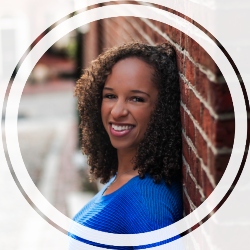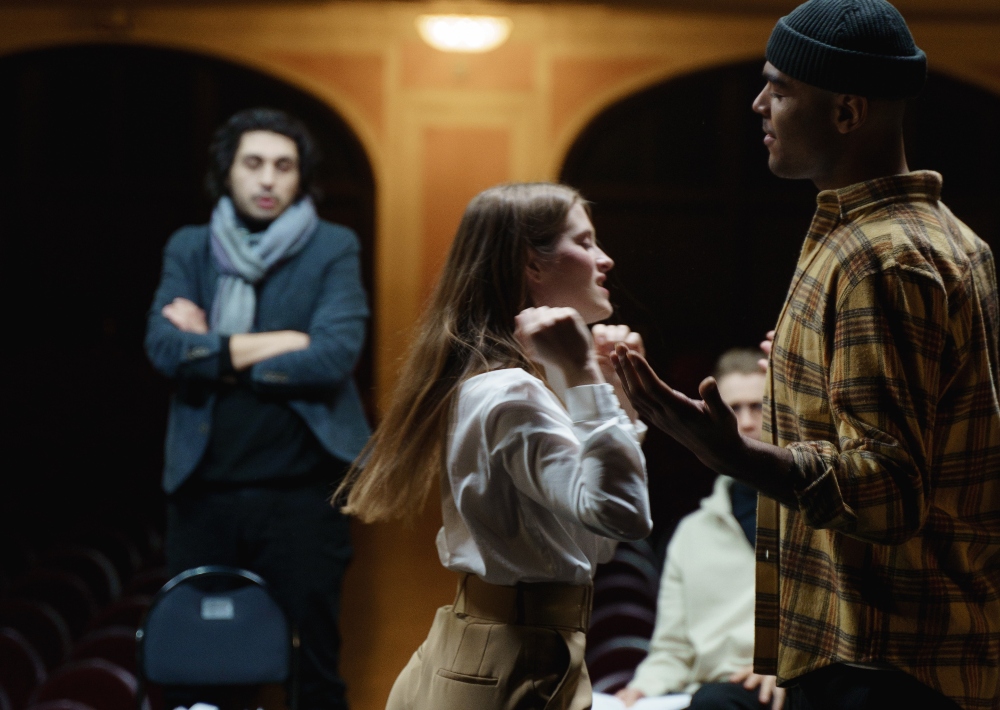8 Reasons Why the Arts Need a Different Approach To Equity, Diversity & Inclusion
I made the leap from freelancing to starting my own EDI consulting business and building a new model for the work. Here’s why.
Starting a business was never on my vision board. But at the crossroads of most major revelations in my life, I’ve looked around and asked myself “who is supposed to be helping here?” And after hearing crickets, after realizing no one else is seeing exactly what I’m seeing, I finally say to myself: “Oh. I think it’s me.”
Let me back up.
In 2020, with the absence of theater projects, I started this blog. I didn’t know if I’d have anything to say that would be interesting to anyone — I just starting writing. I wrote about my experiences as a Black, biracial woman, mother and theater artist. And along the way, I wrote myself into the answer of what I was supposed to do with my life. I figured out how to combine all of the seemingly disparate parts of myself and use them make a difference in my corner of the world — as an Equity, Diversity & Inclusion consultant specializing in the arts.
I got to work studying — I took Diversity & Inclusion courses, read a ton of books, watched YouTube and LinkedIn videos and followed social media accounts centered around equity, diversity, inclusion and workplace culture. And I certainly found what I learned valuable. But when I got on my feet as a freelance consultant in theatrical environments, I found that the corporate-style information that I’d learned wasn’t what was most helpful.
Nine times out of ten, drawing from my own personal experience, or trusting my own gut instincts, was what helped me to connect with other artists and create meaningful change. I received the feedback that it was refreshing to have an EDI consultant who was intimately familiar with the nuances and challenges specific to the theater world.
So where was the training to help me show up in theater and arts environments and do this work? Where was the training to become the kind of consultant I had craved in all of my experiences as an actor and choreographer?
Not the inconsistent kind of consultant on a board of advisors that meets quarterly. These voices are valuable, but heard too infrequently. They’re not paid enough for the kind of consistent support and input companies need.
Not the kind of EDI consultant who comes in to lead a one-day training. Those trainers and consultants are often a necessary starting place for companies. But I think of those consultants as more of a “Step 1” — learning the basics. I wanted to help companies integrate anti-racism and EDI concepts into the realities of their day-to-day operations — or what I started calling “Step 2” in my head.
And there was another concern to contend with — the standard rubric for calling an EDI consultant in the first place. Usually, what instigated calling in professional help was some sort of uncomfortable situation or crisis. But when I got these calls, rather than going in and leading impersonal trainings, I got to know the people. I created conversation and dug into their existing systems. I invested in the company. And instead of focusing on “solving” the crisis at hand, I kept my focus on long term solutions. And I realized that solutions looked different in arts spaces.
Oh, I Think It’s Me.
I envisioned a world where an EDI consultant was as standard as a stage manager on any given show, where every theater and arts organization invested in regular EDI support. I wanted to build structures of trust within these companies rather than rushing to put out fires.
The truth was, and is, that the trainings and certifications I craved didn’t exist because the structure of my vision for EDI consulting for the arts didn’t exist yet. And therefore, the job I was envisioning didn’t exist yet. Then the terrifying, inescapable reality hit me. If I wanted to prove the need for this new structure, I was going to have to do it myself.
I’m a big believer in thinking outside of the box (after spending the majority of my life squeezing into boxes that didn’t fit all of me.) So while I was terrified to take the leap, I decided to build the Equity, Diversity & Inclusion model I’ve wanted to see for so long.
As the founder of Art & Soul Consulting, I’ve been investing time in explaining my new approach, and being clear about the “why.” And a big “why” is that different environments require different approaches in order to connect and succeed. So here are the 8 biggest reasons why I took the leap to rethink an approach to EDI consulting for the arts that could (I hope) be the new norm.
1. “The Show Must Go On” Mentality
All the training in the world can’t stop the machine of a show. Anyone who has ever worked in theater can attest to that. As artists, we often put up shows after just a few weeks of rehearsals. And when the time comes for technical rehearsals, tempers are high, time is short, and nothing much matters except getting the show on its feet.
As artists, we’ve all plowed through uncomfortable environments and situations in service of the show. It’s easy in the heat of tech to feel like the world will end if the show is halted. It’s also easy for that environment to turn hostile. But we plow through. We often fail to realize that there are more important things in the world than putting on a show. But the struggles we push through often have lasting, negative (and sometimes traumatic and disastrous) effects.
2. Ever-Changing Work Environments
Most theaters and arts organizations post 2020 have have begun or ramped up anti-racism training. As I mentioned, I think of those trainings as the first step. A crucial first step, no doubt about that. But what about the rehearsal rooms and new artistic environments created every time there’s a new show, new project, new cast, new audience?
Theater environments are not like typical offices. The backdrop, literally and figuratively, changes every couple of months. One show may take us to 1900’s Oklahoma. The next show may take us to Washington Heights in the 2000’s. Casts can be made up of two people who need to work together intimately or of huge groups navigating lots of dynamics. What is needed in terms of Equity shifts. The diverse makeup of the room changes. And true inclusion is measured in different ways.
3. Front-Facing Diversity
While other companies doing this work ramp up their diversity efforts across the board, the arts has the blessing, and the curse, of showing the progress of their diversity efforts on stage and screen. There may be many visible artists of varying ethnicities, races, abilities and genders on stage for an audience to see. But what about behind the scenes? And what about the structures supporting those artists from the inside?
What often happens is this: artists from marginalized communities get charged with the (unpaid) labor of the work of Equity, Diversity & Inclusion on top of the jobs they’ve been hired to perform. It’s the opposite of what they deserve, which is deep support and representation behind the scenes. They should be able to come in, perform the work they were hired to do, and not be expected to speak for the demographic they represent — but also feel safe in the knowledge that someone else is charged with holding the work.
4. Vulnerability in Charged Environments
Though EDI work may encourage vulnerability in corporate environments, theater is a totally different animal. We ask artists to access an enormous amount of vulnerability, and often trauma, to perform for large groups of people. But we also give them little in the way of support.
Employees in corporate environments may suffer silently at work, but we don’t ask them to perform their suffering. Black artists for example, who may carry their own racial trauma, are often asked to “perform” racial trauma. No amount of anti-racism training for a theater’s board can adequately address that in the rehearsal room or onstage. And really, any show that deals in any way with racism, sexism, homophobia, transphobia, ableism, harassment or assault (the list goes on and on), can easily bump up against any given artists’ trauma.
Creating a safe, supportive environment in which to freely explore these traumas, through guided conversation and boundary/guideline setting, is crucial for these artists.

5. Rotating Artists On Various Projects
While theater staff and board members may have access EDI trainings or programs, the artists who come in to direct, play, design or perform for that theater company often do not. And it is those artists, the ones that have zero access to EDI support, who are the leaders of rehearsal and artistic spaces.
Artists don’t often work at just one theater, or on just one show (apart from at the Broadway level). But just because artists are always “temporary” doesn’t mean they don’t deserve access to EDI services.
6. Where Is HR?
In most workplace settings, there is a Human Resources presence. There is a person, or an entire department, whose job (in part) is to keep a pulse on the room, maintain a safe work environment, facilitate conversations between employers and employees, mediate conflicts that arise, and offer development and training opportunities. This is shockingly nonexistent in theater.
When conflicts or struggles arise, there’s usually a scramble while someone wearing at least two other hats tries to handle the EDI issue. It’s bonkers to me that we haven’t thought to have a human resources presence in theaters.
7. Pressure For Immediate Results
Because theater and the arts are such a visual medium, there is often a lot of outside pressure to see results right now. Like, yesterday. We want to see that all Black cast on social media and we want to see it NOW. Totally understandable and valid. Representation matters, and we want to see that representation on stage.
But often times, that’s where the work begins and ends. Societal pressures and demands from critics on social media can lead to performative action that receives applause and likes rather than deep, systemic change that yields genuine results over time.
8. Challenging & Triggering Creative Material
Problematic classics, new works that address hot button issues, and everything in between — theater and the arts deal with all kinds of challenging material. And isn’t that the point of art — to warn us and teach us, to make us think, reconsider and reimagine?
This is why many of us enjoy the arts — why we go to the theater. But the artists delving deeply into these stories need support while sifting through and interpreting the material in a safe, inoffensive, accurate, thoughtful and authentic way.
***
Okay, are you on board yet? Reach out anytime to talk more about my journey with EDI for the arts. This is only the beginning.

